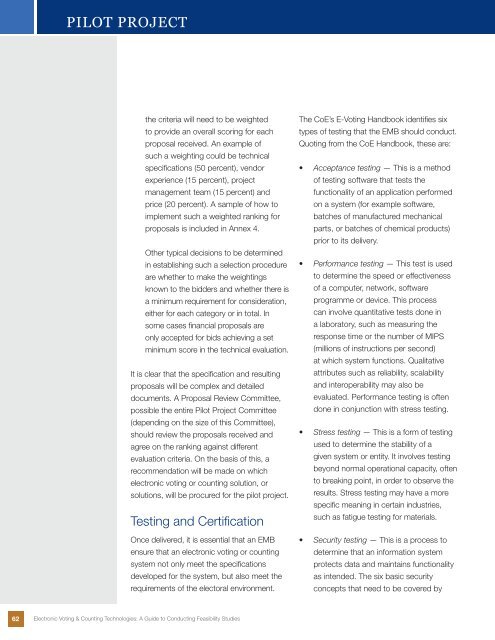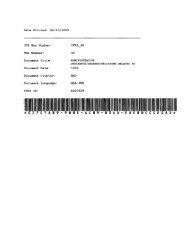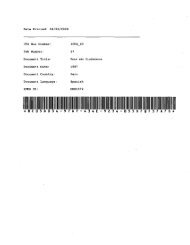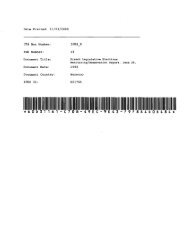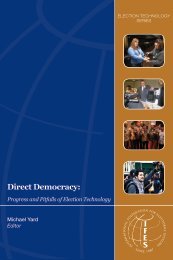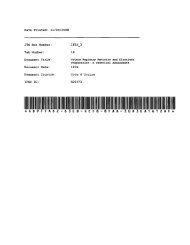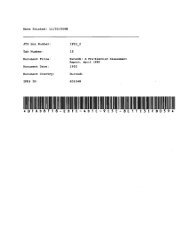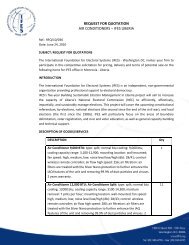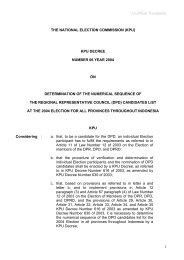Electronic Voting & Counting Technologies - IFES
Electronic Voting & Counting Technologies - IFES
Electronic Voting & Counting Technologies - IFES
- No tags were found...
Create successful ePaper yourself
Turn your PDF publications into a flip-book with our unique Google optimized e-Paper software.
INTERNATIONAL PILOT PROJECTELECTORAL STANDARDSthe criteria will need to be weightedto provide an overall scoring for eachproposal received. An example ofsuch a weighting could be technicalspecifications (50 percent), vendorexperience (15 percent), projectmanagement team (15 percent) andprice (20 percent). A sample of how toimplement such a weighted ranking forproposals is included in Annex 4.Other typical decisions to be determinedin establishing such a selection procedureare whether to make the weightingsknown to the bidders and whether there isa minimum requirement for consideration,either for each category or in total. Insome cases financial proposals areonly accepted for bids achieving a setminimum score in the technical evaluation.It is clear that the specification and resultingproposals will be complex and detaileddocuments. A Proposal Review Committee,possible the entire Pilot Project Committee(depending on the size of this Committee),should review the proposals received andagree on the ranking against differentevaluation criteria. On the basis of this, arecommendation will be made on whichelectronic voting or counting solution, orsolutions, will be procured for the pilot project.Testing and CertificationOnce delivered, it is essential that an EMBensure that an electronic voting or countingsystem not only meet the specificationsdeveloped for the system, but also meet therequirements of the electoral environment.The CoE’s E-<strong>Voting</strong> Handbook identifies sixtypes of testing that the EMB should conduct.Quoting from the CoE Handbook, these are:• Acceptance testing — This is a methodof testing software that tests thefunctionality of an application performedon a system (for example software,batches of manufactured mechanicalparts, or batches of chemical products)prior to its delivery.• Performance testing — This test is usedto determine the speed or effectivenessof a computer, network, softwareprogramme or device. This processcan involve quantitative tests done ina laboratory, such as measuring theresponse time or the number of MIPS(millions of instructions per second)at which system functions. Qualitativeattributes such as reliability, scalabilityand interoperability may also beevaluated. Performance testing is oftendone in conjunction with stress testing.• Stress testing — This is a form of testingused to determine the stability of agiven system or entity. It involves testingbeyond normal operational capacity, oftento breaking point, in order to observe theresults. Stress testing may have a morespecific meaning in certain industries,such as fatigue testing for materials.• Security testing — This is a process todetermine that an information systemprotects data and maintains functionalityas intended. The six basic securityconcepts that need to be covered by62<strong>Electronic</strong> <strong>Voting</strong> & <strong>Counting</strong> <strong>Technologies</strong>: A Guide to Conducting Feasibility Studies


